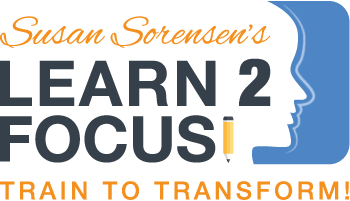What is Auditory Processing Disorder & How is it Treated
/What is Auditory Processing Disorder & How is it Treated?
How many times a day does your child say, “What?”Do you often notice a confused look cross your child’s face when you’re speaking or trying to converse?Is the phrase “has trouble listening and following directions” often written in the comments section of your child’s report card?
It may be that Auditory Processing Disorder (APD) is interfering with your child’s ability to “get it.”
Here’s what you need to know about ADP and how to get help:
According to the National Coalition of Auditory Processing Disorders (NCAPD), APD is a neurological defect that influences how the brain processes spoken language.
Recent numbers suggest that 5 percent of children are affected.
Many children and adults live with the disorder but aren’t aware that ADP is the source of their social, academic, and career setbacks.
Essentially, a child who is affected by APD struggles to process verbal messages or has difficulty filtering out background noise.
Common characteristics of Auditory Processing Disorder include the following:
- Poor listening skills
- Difficulty following multipart directions
- Poor organizational skills
- Trouble with reading, spelling, comprehension
- Easily distracted or agitated by background noise
- Difficulty having long conversations
- Difficulty hearing correctly/or discriminating information
- Poor ability to recall verbal messages or material
Imagine the frustration a child feels in the classroom or a noisy cafeteria.
It’s no surprise that behavioral problems often accompany ADP. The condition may create a significant amount of hardship for a child who is wrestling constantly with the receipt, comprehension, and integration of auditory information.
The “hidden disability.”
It isn’t unusual to find that children with ADP go for a long period of time undiagnosed or misdiagnosed. The behaviors witnessed by those close to a person with ADP may appear to be ADHD, deafness, or even autism.
Once it is diagnosed properly, an ADP-affected person can addressed it for what it really is:
A learning disability.
The child (or adult) is not suffering from a more comprehensive issue like autism, mental retardation, or attention deficit but a specific inability to integrate spoken information.
How is ADP treated?
To move forward, treatment for ADP must involve development of specific auditory skills. This process is highly individualized. Not every treatment works for every child. You may notice many APD markers in your child, but an accurate picture of his or her situation must involve the proper assessment.
To effectively treat your child, the American Speech-Language-Hearing Association (ASHA) and NCAPD encourage a multi-disciplinary approach. Reach out to an audiologist for auditory processing testing, a psychologist for cognitive/behavioral testing, a speech-language pathologist for language Testing, and/or a sensory systems assessment by an occupational therapist.
Generally, ADP therapy will center on three primary targets:
- Environmental Modification: alter the communication environment to improve access to verbal information. Solutions include visual and gesture cues, preferential seating and teacher-oriented adjustments like pre-taught key words or vocabulary to help improve focus.
- Compensatory Strategies: engage higher-order skills to help override the ADP. Central cognitive skills like problem-solving and memory are strengthened to help overcome the disorder. Children are encouraged to be active participants in daily listening activities and techniques.
- Corrective Measures: remediate the auditory deficit directly. Employ computer-assisted treatments or individual training with a therapist. Depending on your situation and the needs of your child, therapy sessions may take place in a school, clinic, or at home. Researchers have discovered that many language and learning disabilities, APD included, may be due to a split-second delay in the brain’s ability to process input from certain senses. Studies reported that there are “Structural brain differences in areas involved in the rapid processing of hearing, vision and touch in affected people, and that people with these learning disorders require 300 milliseconds to process basic speech sounds, where normal processing takes about 25 milliseconds.”This critical work by Dr. Paula Tallal, of Rutgers University, and later collaboration with other researchers, Dr. Michael Merzenich, Dr. William Jenkins, and Dr. Steve Miller, led to the development of Fast ForWord. Fast ForWord products are computerized language learning programs that help children rapidly build oral language comprehension and other critical skills necessary for improved learning, communication and reading. They are based on the concept that Temporal Processing deficits are an essential difficulty in APD and on the concept of Neural Plasticity – that the brain can learn new processes through repeated intensive practice.
When intervention is properly executed, children respond to the opportunity to take charge of their learning and communication.
Children with APD want to succeed despite the challenges.
If you suspect ADP, seek out a qualified professional soon.
Bring this “hidden” problem out into the open, and receive the help you need.

